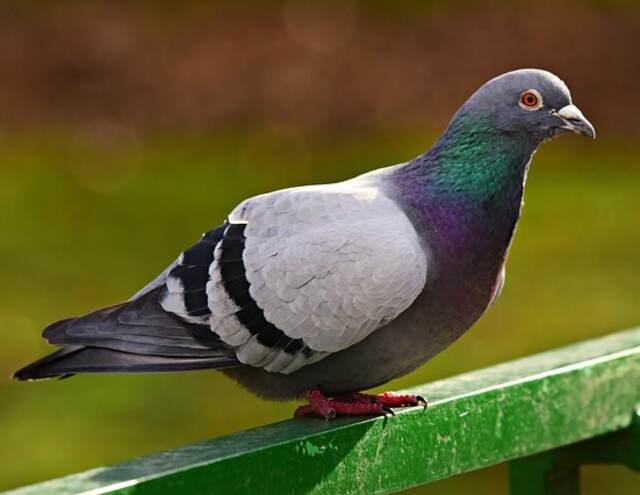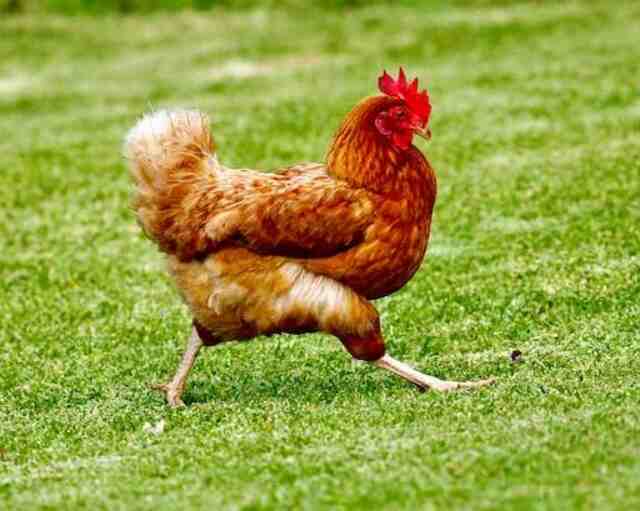Do Birds Carry Diseases? Well, let’s put it this way: have you ever received a sneeze from a bird mid-flight? No? Congratulations, you’ve dodged a bullet! But don’t flap away just yet!
In this article, we’ll uncover the feathered truth about whether our avian friends pose a health risk and explore the surprising reasons why you should still keep reading. Feathered fiestas and contagious chirps await!
Table of Contents
- 1 Overview of Bird Diseases
- 2 Do Birds Carry Diseases?
- 3 FAQs: Do Birds Carry Diseases?
- 3.1 Can birds transmit diseases to humans?
- 3.2 How are bird-borne diseases transmitted to humans?
- 3.3 Are all bird species capable of carrying diseases?
- 3.4 What are some common bird diseases that humans can contract?
- 3.5 Can bird diseases cause global outbreaks or pandemics?
- 3.6 How can I protect myself from bird-borne diseases?
- 3.7 Are wild birds more likely to carry diseases than domesticated birds?
- 3.8 Can bird droppings transmit diseases?
- 3.9 What precautions should I take when handling birds?
- 3.10 Can bird diseases be treated in humans?
- 4 Author
Explanation of the topic
The idea that birds could carry diseases is not a new one. In fact, for centuries, humans have been wary of these creatures due to their potential health risks.
Some bird species have been known to transmit viruses and bacteria that can cause serious illnesses in both humans and animals.
While not all birds carry diseases, it is important to understand which species pose a greater risk for transmission and how these diseases are contracted.
This information can help people take proper precautions when handling or interacting with birds, whether in the wild or through domestication.
Importance of understanding if birds carry diseases
Understanding whether birds can carry diseases is crucial for a number of reasons. First and foremost, it can help prevent the spread of illness among animals and humans alike.
By knowing which bird species pose a greater risk for transmitting viruses or bacteria, people can take steps to avoid contact with them or properly disinfect areas where they frequently congregate.
Additionally, studying bird-borne illnesses provides valuable insights into epidemiology and disease transmission in general.
Through research on avian influenza or other bird-related illnesses, scientists may be able to better predict outbreaks or develop new treatments.
Public awareness about whether certain bird species carry diseases can also help shape policies around wildlife management and conservation efforts.
By understanding how human interaction with specific bird populations could impact disease transmission rates among other animal populations (such as poultry), policymakers may be able to make more informed decisions about how best to protect these creatures while also safeguarding human health.

Overview of Bird Diseases
Birds have been known to harbor several diseases that can not only affect other birds but also other animals, including humans.
These diseases can range from mild illnesses like conjunctivitis to life-threatening ones like avian influenza.
Understanding bird diseases is crucial since they can cause significant economic losses, environmental damage, and public health concerns.
Common bird diseases
The most common bird diseases include avian influenza, Newcastle disease, and psittacosis. Avian influenza is caused by a virus that infects birds and spreads quickly in poultry farms, leading to high mortality rates.
Newcastle disease is caused by a virus that affects domestic poultry and wild birds worldwide. Psittacosis is another common bird disease caused by Chlamydia psittaci bacteria found in parrots, pigeons, and doves.
Avian Influenza
Avian influenza or “bird flu” has been the most significant concern among all the bird-borne viruses in recent years due to its potential threat to human health.
The virus spreads through direct contact with infected birds or their secretions/excretions.
The symptoms of the disease vary depending on the severity of the infection, but often include fever, coughing, respiratory distress, and even death.
Humans can contract avian influenza if they come into close contact with infected birds or their contaminated environment, such as farms or markets where live poultry are sold.
The risk of human-to-human transmission has also been reported in some rare cases, leading to severe respiratory illness or death.
Newcastle Disease
Newcastle disease is another highly contagious viral infection that affects domestic poultry worldwide, with a mortality rate of up to 90%.
Wild birds such as waterfowl are known carriers of this virus without experiencing symptoms themselves.
The spread occurs through direct contact with an infected bird’s droppings, nasal discharges, or contaminated surfaces.
Newcastle disease can cause respiratory distress, neurological symptoms, and even death in birds.
Humans are rarely affected by the virus, but can contract it through close contact with infected birds or their secretions/excretions.
Psittacosis
Psittacosis is a bacterial infection caused by Chlamydia psittaci that affects parrots, pigeons, and doves. Birds infected with this bacterium usually do not show any symptoms of the disease.
However, humans can contract psittacosis by inhaling dust or fecal particles from infected birds’ cages or handling these birds.
Symptoms of psittacosis in humans include fever, headache, chills, muscle aches, and coughing. If left untreated, it can lead to severe lung damage or even death in some cases.
Overall, bird diseases pose a significant threat to public health and animal welfare worldwide.
Despite the low risk of human-to-human transmission for most bird-borne diseases like avian influenza and Newcastle disease; proper hygiene practices such as washing hands after handling birds and avoiding close contact with sick birds remain essential to prevent disease transmission.

Do Birds Carry Diseases?
Evidence Supporting the Idea that Birds Carry Diseases
Birds are known to carry a variety of diseases that can be transmitted to humans.
Studies and research have shown that bird-borne illnesses, such as avian influenza, Newcastle disease, and psittacosis, can be passed from birds to humans with serious health consequences.
In some cases, these diseases have even caused global pandemics. Moreover, there have been many examples of bird-related disease outbreaks throughout history.
For instance, the H5N1 avian influenza outbreak in 1997 infected 18 people in Hong Kong and resulted in six deaths.
The H7N9 outbreak in China in 2013 was also linked to live poultry markets, where birds were kept in close proximity with humans.
Hygiene and Handling Can Prevent Disease Transmission
Despite these risks, there are some arguments against the idea that birds carry diseases. One argument is that the risk of transmission is relatively low for most bird-related illnesses. Proper hygiene and handling of birds can further reduce this risk.
This includes washing hands thoroughly after handling birds or their droppings and avoiding contact with sick or dead birds.
Protective gear such as gloves and masks should also be worn if working with potentially infected animals.
Niche Subtopics: Examining Specific Bird Species and Their Potential for Carrying Diseases
Pigeons: The Urban Bird and Its Health Risks
Pigeons are commonly found in urban areas throughout the world, but they are often considered a nuisance due to their droppings which accumulate on buildings and streets.
These droppings present a significant health hazard as they contain bacteria, fungus, viruses and other pathogens.
Moreover, pigeon-related illnesses like histoplasmosis (a fungal infection), cryptococcosis (a fungal disease affecting the respiratory system), and salmonellosis (a type of food poisoning) have all been linked to contact with pigeons or their droppings.
Wild Birds: Understanding Their Role in Spreading Diseases
Wild birds, including migratory species, can also carry a range of diseases that pose a risk to human health.
Zoonotic pathogens such as West Nile virus, Lyme disease, and H5N1 avian influenza have all been identified in wild bird populations.
These diseases can be transmitted through bird droppings or contact with infected birds. In particular, migratory birds can spread diseases across long distances and between different regions.
Conclusion
Although the risks of bird-borne illnesses may seem daunting, precautions such as hygiene practices and proper handling can significantly reduce the risk of transmission.
Moreover, by understanding the potential health hazards associated with specific bird species like pigeons and wild birds, we can take steps to protect ourselves and our communities from these risks.
Overall, while it is important to be aware of the potential for disease transmission from birds, there is no need to panic as long as we take appropriate safety measures.

FAQs: Do Birds Carry Diseases?
Can birds transmit diseases to humans?
Yes, some birds can transmit diseases to humans. Bird-borne illnesses like avian influenza, Newcastle disease, and psittacosis have been known to affect humans. It’s important to be cautious when handling birds or their droppings to minimize the risk of disease transmission.
How are bird-borne diseases transmitted to humans?
Bird-borne diseases can be transmitted to humans through direct contact with infected birds or their secretions/excretions. Close proximity, handling sick birds, or exposure to contaminated environments such as poultry farms or markets can increase the risk of transmission.
Are all bird species capable of carrying diseases?
Not all bird species carry diseases, but some are more likely to be carriers than others. Birds such as pigeons, parrots, and waterfowl have been associated with specific diseases. Understanding which species pose a greater risk can help in taking appropriate precautions.
What are some common bird diseases that humans can contract?
Common bird diseases that can be transmitted to humans include avian influenza (bird flu), Newcastle disease, and psittacosis. These diseases can cause respiratory symptoms, fever, and, in severe cases, even death. Proper hygiene and precautions are crucial when dealing with birds.
Can bird diseases cause global outbreaks or pandemics?
Yes, bird diseases have the potential to cause global outbreaks or pandemics. Historical examples include the H5N1 avian influenza outbreak in 1997 and the H7N9 outbreak in China in 2013. Close contact between humans and infected birds can facilitate the spread of these diseases.
How can I protect myself from bird-borne diseases?
To protect yourself from bird-borne diseases, practice good hygiene. Wash your hands thoroughly after handling birds or their droppings, avoid close contact with sick birds, and wear protective gear if working with potentially infected animals. These measures can reduce the risk of disease transmission.
Are wild birds more likely to carry diseases than domesticated birds?
Wild birds, including migratory species, can carry diseases that pose risks to human health. Their natural behaviors and habitats increase the potential for exposure to zoonotic pathogens. However, domesticated birds can also carry diseases, especially if kept in unsanitary conditions.
Can bird droppings transmit diseases?
Yes, bird droppings can transmit diseases. They may contain bacteria, fungi, viruses, or parasites that can cause infections or illnesses. Avoid direct contact with bird droppings, and if cleaning areas contaminated with droppings, take appropriate precautions to prevent disease transmission.
What precautions should I take when handling birds?
When handling birds, take precautions such as wearing gloves and masks, especially if dealing with sick or potentially infected birds. Avoid direct contact with droppings, and wash your hands thoroughly afterward. These measures can help minimize the risk of disease transmission.
Can bird diseases be treated in humans?
Treatment for bird-borne diseases in humans varies depending on the specific disease and its severity. Antiviral or antibiotic medications may be prescribed to manage symptoms and prevent complications. Prompt medical attention is essential for appropriate diagnosis and treatment of bird-related illnesses.



